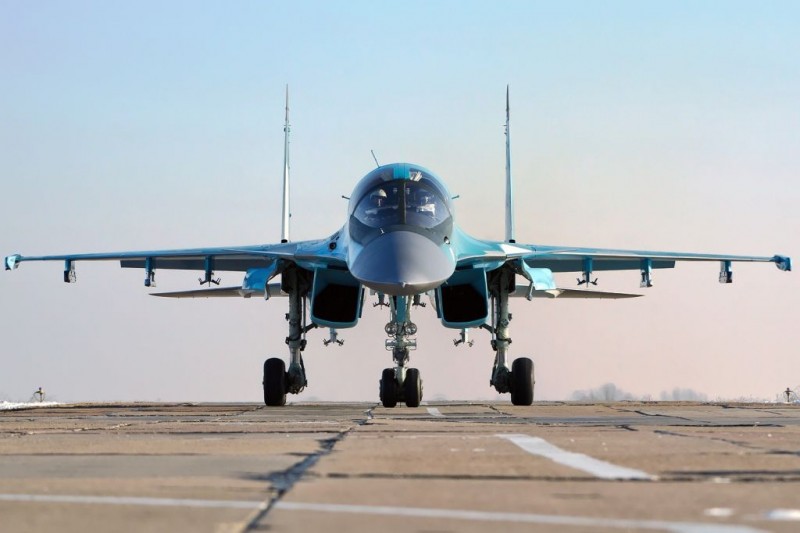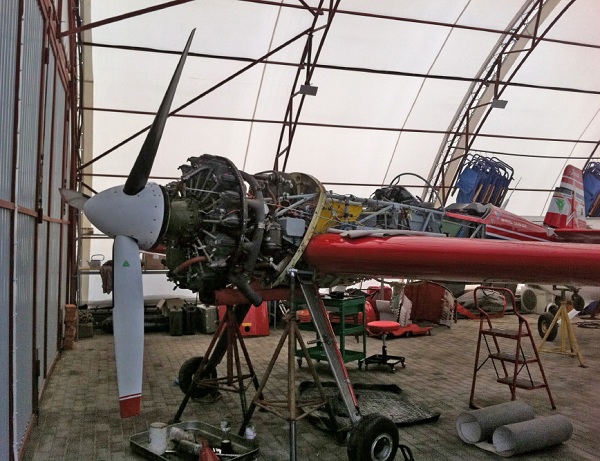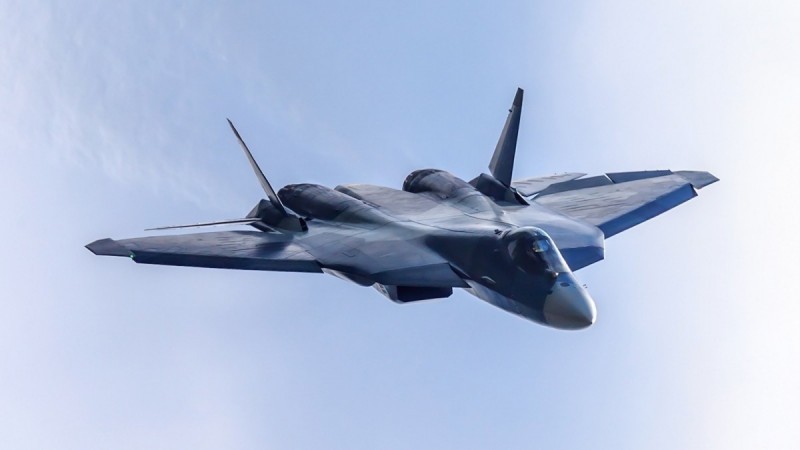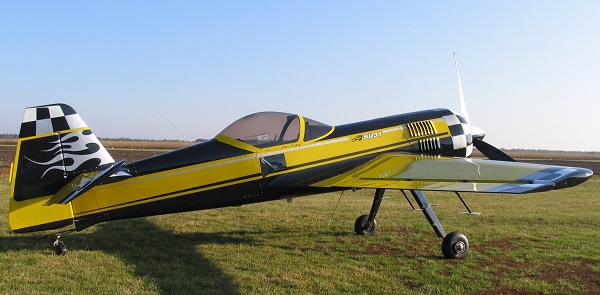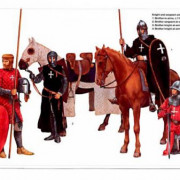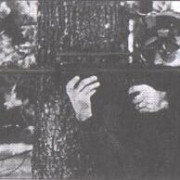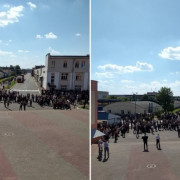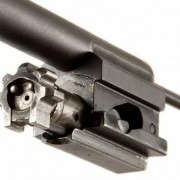Немецкий реактивный самолет «мессершмитт-262»: история создания, конструктивные особенности, фото
Содержание:
- Description
- Основные модификации самолётов Мессершмитт Me-262 Швальбе/Штурмфогель»:
- Победители реактивных «Мессершмиттов-262»: Восточный фронт
- Описание
- General info
- External links
- History
- История создания самолета
- Usage in battles
- History
- Как союзники боролись с МЕ-262
- Me 262 C-1a «Heimatschützer»Edit
- Боевое использование Мессершмитт Me-262
- History
- External links
- Me 262 A-2 «Sturmvogel»Edit
- Истребительная часть «Ягдфербанд 744 (J744)»
- General info
- Media
- Sources
- Короткая биография «Ягдфербанд 744 (J744)»
Description

The Me 262 A-1a Schwalbe is a rank V German jet fighter
with a battle rating of 7.3 (AB) and 7.0 (RB/SB). This jet fighter has been in the game since the start of the Open Beta Test prior to Update 1.27.
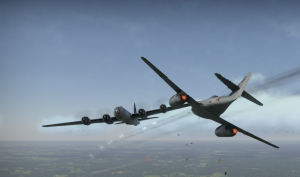
This aircraft is a true heavy fighter in every way. Thus, the following is guaranteed: bomber «box formations» fall apart under your heavy rocket bombardments, flying fortresses perish within seconds by this machine’s mighty claws, and the unusually low velocity of the German «sledgehammer» MK 108 cannons this aircraft wields will probably drive you insane.
The MK 108 has insane damage potential. With the second greatest in-game burst mass of 14.52 kg/s (32.01 lbs/s) and the great explosive warhead «Minengeschoss» (mine-shell), this weapon will vaporize aircraft, especially bombers. But every coin has a flip side and the «Sledgehammer» is no exception. The amazing rate of fire is exchanged with a very short barrel and small propellant charges, resulting in very bad ballistics. The MK 108 cannon fires the slowest shells with the greatest bullet drop in the game. Thus, the MK 108 makes no compromises, only excelling in the «extremes».
As you might guess, the MK 108 is a very bad anti-fighter weapon particularly in a jet to jet combat. Bullet drop and slow velocity result in a severe difficulty leading shots at ranges above 300 meters (350 yds). In dogfights where both aircraft are constantly turning and changing direction, this trait gets even worse. The high speeds of jet battle push the necessary lead for hitting the target farther in front of the enemy. Training with this weapon system in a custom battle against random enemies is heavily advised.
The MK 108 cannons have an ammo indicator in the cockpit, which is typical for Luftwaffe aircraft. It sits directly beneath the compass (the one with the little plane in the middle). The left white column is for the two top auto-cannons. The right one is for the bottom two cannons; this bar is also taller than the left one as the ammo count is different for the two pairs.
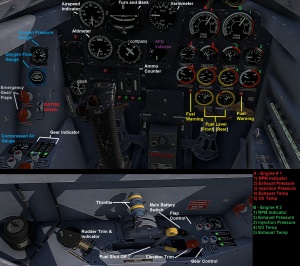
The Schwalbe’s instrument panel.
Основные модификации самолётов Мессершмитт Me-262 Швальбе/Штурмфогель»:
Me-262А-1а — ТРД Jumo 004В-1 (впоследствии В-2 и В-3) тягой 900 кгс. Вооружение — 4 30-мм пушки МК 108, установленные в носовой части (боекомплект 100 снарядов на ствол для верхней пары и 80 — для нижней). Вариант Me 262A-1a/U1 (3 самолета) получил усиленное вооружение — 2 МК 108, 2 30-мм пушки МК 103 (по 72 снаряда) и 2 20-мм MG 151/20 (по 146 снарядов). Ещё 3 самолета Me 262А-1a/U4 в опытном порядке вооружались 1 50-мм пушкой ВК 5 (30 снарядов). Испытывался и вариант Me 262A-1a/U5 с 6 пушками МК 108. Один Me 262A-1a/U2 испытывался в качестве ночного истребителя с РЛС FuG 220. Me 262A-1a/U3 представлял собой разведчик с АФА на месте пушек (часть самолетов сохранили 1 пушку МК 108). Вариант Me 262A-1a/R1 был истребителем-перехватчиком, дополнительно вооруженным 24 55-мм НАР класса «воздух-воздух» R4M.
Me-262А-2а — истребитель-бомбардировщик, переделанный из Me 262А-1а. Отличался лишь наличием подфюзеляжных держателей для 2 250-кг или 1 500-кг бомб. 2 самолета Me 262A-2a/U1 дополнительно получили прицел для низковысотного бомбометания, установленный в носовой части вместо 2 пушек. Me 262A-2a/U2 (92 машины) имели в носовой части застекленную кабину для второго члена экипажа — бомбардира.
Серийно не строились бронированный штурмовик Me 262А-3а и разведчик Me 262А-4а. В небольшом количестве выпускался разведчик Me 262А-5а, приспособленный для подвески двух 300-л ПТБ.
Ме-262В-1а — двухместный учебный вариант. Пушечное вооружение сохранено. Второе кресло для инструктора установлено на месте заднего основного топливного бака, что потребовало установки пилонов для подвески 2 300-л ПТБ. Построено 15 единиц, ещё около 10 переоборудовано в ночной истребитель Me 262B-1a/U1 с РЛС FuG 218 и пеленгатором FuG 350ZC.
Не успел попасть в серию Me 262В-2а — ночной истребитель с удлиненным фюзеляжем и РЛС FuG 240. Также не выпускались самолеты Me 262С с комбинированной силовой установкой (ТРД+ЖРД).
Победители реактивных «Мессершмиттов-262»: Восточный фронт
Помимо западноевропейского театра военных действий, появлялись «Мессершмитты-262» и на Восточном фронте. Правда, сведения об этом достаточно скупы. Тем не менее в списке победителей «Мессершмитта-262» присутствуют фамилии и советских асов. Официально зарегистрированные сбитые реактивные «мессеры» на своем счету имеют Иван Кожедуб, Лев Сивко, Иван Кузнецов, Яков Околепов и Александр Долгунов. Предположительно в этот список должны быть включены еще две фамилии: Гарри Мерквиладзе, летчик 152-го гвардейского авиаполка и Владимир Егорович из 402-го истребительного авиаполка.
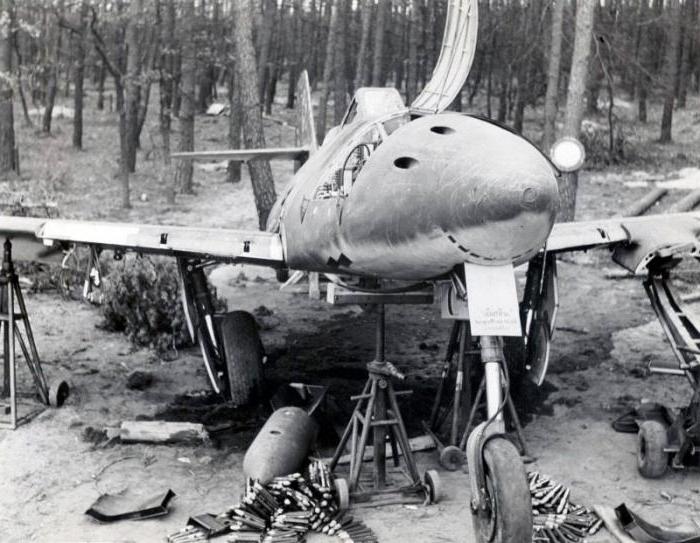
Однако подтверждения об их победах в архивах не обнаружено.
Описание
Последняя модель самолета «Мессершмитт-262», конструкция которого еще не напоминала реактивные машины нынешних времен, был оснащен двумя турбореактивными двигателями и крыльями прямой стреловидности. Максимальная скорость передвижения составляла почти 850 км/ч. Высоту в 9 000 метров он набирал за 7 минут. Максимальная высота полета составляла 11 000 метров. Из вооружения следует отметить четыре 30-миллиметровых пушки МК-108, каждый снаряд которых мог запросто сбить тяжелый бомбардировщик. Они были расположены попарно в каждом из крыльев, одна над другой. Имелась также возможность установки до 12 неуправляемых ракет.
General info
Flight Performance
Describe how the aircraft behaves in the air. Speed, manoeuvrability, acceleration and allowable loads — these are the most important characteristics of the vehicle.
| Characteristics | Max Speed(km/h at 6,000 m) | Max altitude(metres) | Turn time(seconds) | Rate of climb(metres/second) | Take-off run(metres) | |||
|---|---|---|---|---|---|---|---|---|
| AB | RB | AB | RB | AB | RB | |||
| Stock | 824 | 798 | 12 500 | 29.0 | 30.0 | 16.0 | 15.0 | 750 |
| Upgraded | 909 | 865 | 27.7 | 28.0 | 24.5 | 20.0 |
Details
| Features | |||||
|---|---|---|---|---|---|
| Combat flaps | Take-off flaps | Landing flaps | Air brakes | Arrestor gear | Drogue chute |
| ✓ | ✓ | ✓ | X | X | X |
| Limits | ||||||
|---|---|---|---|---|---|---|
| Wings (km/h) | Gear (km/h) | Flaps (km/h) | Max Static G | |||
| Combat | Take-off | Landing | + | — | ||
| 1050 | 450 | 580 | 580 | 380 | ~11 | ~5 |
| Optimal velocities (km/h) | |||
|---|---|---|---|
| Ailerons | Rudder | Elevators | Radiator |
| < 500 | < 600 | < 680 | N/A |
Engine performance
| Engine | Aircraft mass | |||||||
|---|---|---|---|---|---|---|---|---|
| Engine name | Number | Empty mass | Wing loading (full fuel) | |||||
| Junkers Jumo 004B-1 | 2 | 4,280 kg | 287 kg/m2 | |||||
| Engine characteristics | Mass with fuel (no weapons load) | Max TakeoffWeight | ||||||
| Weight (each) | Type | 16m fuel | 20m fuel | 30m fuel | 45m fuel | 53m fuel | ||
| 720 kg | Axial-flow turbojet | 4,894 kg | 5,041 kg | 5,409 kg | 5,961 kg | 6,255 kg | 6,520 kg | |
| Maximum engine thrust @ 0 m (RB / SB) | Thrust to weight ratio @ 0 m (100%) | |||||||
| Condition | 100% | WEP | 16m fuel | 20m fuel | 30m fuel | 45m fuel | 53m fuel | MTOW |
| Stationary | 910 kgf | N/A | 0.37 | 0.36 | 0.34 | 0.30 | 0.29 | 0.28 |
| Optimal | 910 kgf(0 km/h) | N/A | 0.37 | 0.36 | 0.34 | 0.30 | 0.29 | 0.28 |
- 15 mm Steel — Behind the pilot
- 15 mm Steel — Pilot’s headrest
- 15 mm Steel — Between cockpit and fore fuel tank
- 15 mm Steel — Instrument panel plate
- 16 mm Steel x 2 — Ammunition protection plates
- 90 mm Bulletproof glass
External links
Paste links to sources and external resources, such as:
- topic on the official game forum;
- encyclopedia page on the aircraft;
- other literature.
| Bavarian Aircraft Corporation (Bayerische Flugzeugwerke Aktiengesellschaft (BFW)*) | |
|---|---|
| Bf 109 | Flegel’s Bf 109 A · Bf 109 B-1 · Bf 109 E-1 · Bf 109 E-3 · Bf 109 E-4 · Bf 109 E-7/U2 · Bf 109 F-1 · Bf 109 F-2 · Bf 109 F-4 · Bf 109 F-4/trop · Bf 109 G-2/trop · Bf 109 G-6 · Bf 109 K-4 · Bf 109 G-10 · Bf 109 G-14 · Bf 109 Z |
| Bf 110 | Bf 110 C-6 · Bf 110 C-7 · Bf 110 F-2 · Bf 110 G-2 |
| Me 410 | Me 410 A-1 · Me 410 A-1/U2 · Me 410 A-1/U4 · Me 410 B-1 · Me 410 B-1/U2 · Me 410 B-2/U4 · Me 410 B-6/R3 |
| Bombers | Me 264 |
| Jet Fighters | Me 163 B · Me 163 B-0 · Me 262 A-1a · Me 262 A-1/U4 · Me 262 A-2a · Me 262 A-1a/U1 · Me 262 C-1a · Me 262 C-2b |
| Export | ▅Bf 109 E-7 · ▄Bf 109 G-14/AS · ▄Bf 109 G-2 · Bf 109 G-2 |
| Captured | ▃Bf 109 F-4 |
| * BFW was later renamed Messerschmitt Aktiengesellschaft (AG) on 11 July 1938. All aircraft currently in production at this time retained the designation Bf while those developed after this date had the designation Me. |
| Germany jet aircraft | |
|---|---|
| Ar 234 | Ar 234 B-2 · Ar 234 C-3 |
| He 162 | He 162 A-1 · He 162 A-2 |
| Ho 229 | Ho 229 V3 |
| Me 163 | Me 163 B · Me 163 B-0 |
| Me 262 | Me 262 A-1a · Me 262 A-1a/U1 · Me 262 A-1/U4 · Me 262 A-2a · Me 262 C-1a · Me 262 C-2b |
| USA | CL-13A Mk 5 · CL-13B Mk.6 · ▀F-86K · F-104G |
| USSR | ▀MiG-15bis · ▀MiG-19S · ▀MiG-21MF |
| Britain | Sea Hawk Mk.100 |
| Italy | ▀G.91 R/3 · ▀G.91 R/4 |
| Winter events | |
|---|---|
| Operation F.R.O.S.T. | |
| Pilot stars | TIS MA · J6K1 |
| Tanker stars | QF 3.7 Ram · Merkava Mk.2B |
| Sailor stars | 94 ft PT-811 · Type 1924 Jaguar |
| Festive Quest | |
| Pilot stars | M.B.152C1 · Fw 190 C |
| Tanker stars | SU-85A · T30 |
| Christmas Lights | P-43A-1 · Comet I «Iron Duke IV» |
| Festive Quest | |
| Pilot christmas toys | P-40C · NC.900 |
| Tanker christmas toys | AEC Mk II · Ersatz M10 |
| Christmas Lights | Fw 189 A-1 · KV-2 (1940) |
| Winter Holiday | |
| Pilot stages | Ki-21-I hei · Me 262 A-2a |
| Tanker stages | ▃LVT(A)(4) ZIS-2 · ▂Type 62 |
| War Thunder Fulfills Your Wishes! | |
| Pilot reward | ▂P-63C-5 |
| Tanker reward | VK 45.01 (P) |
| Holiday War Thunder Marathon! | |
| Pilot reward | I-301 |
| Tanker reward | M8A1 |
| Winter Magic! | |
| Rewards | TB-3M-17-32 · XF5F |
History
Describe the history of the creation and combat usage of the aircraft in more detail than in the introduction. If the historical reference turns out to be too long, take it to a separate article, taking a link to the article about the vehicle and adding a block «/ History» (example: https://wiki.warthunder.com/(Vehicle-name)/History) and add a link to it here using the template. Be sure to reference text and sources by using , as well as adding them at the end of the article. This section may also include the vehicle’s dev blog entry (if applicable) and the in-game encyclopedia description (under , also if applicable).
История создания самолета
Пожалуй, ни одна из моделей самолетов не претерпела столько трудностей в процессе своего становления, как «Мессершмитт-262». История создания этой машины, ее разработка и доведение до серийного производства осложнялись не только бюрократическими проволочками и недостаточным финансированием, но и множеством технологических проблем.
Свой первый полет, как сообщил А. Шпеер — министр вооружений Германии, этот самолет совершил за месяц до нападения немецких войск на СССР. В первой модели МЕ-262 были использованы еще поршневые двигатели. Однако они оказались недостаточно мощными. Уже на следующий год было решено воспользоваться реактивными двигателями Jumo-004, которые разработала и начала выпускать фирма «Юнкерс».
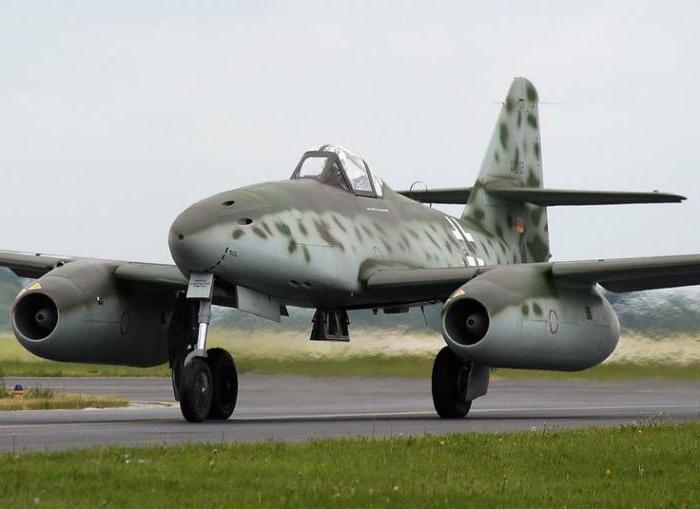
В истории известно немало фактов, когда грядущие нововведения сводили на нет всю ценность вооружения предыдущего поколения. «Мессершмитт-262» можно считать одним из таковых. Преимущество новой машины перед самолетами противника было очевидным, но детские болезни германской экономики стали непреодолимым препятствием на пути к его массовому производству.
К главным проблемам, которые преследовали разработку самолета на протяжении всей его истории, относят: во-первых, ненадежность турбореактивных двигателей Jumo, которыми оснащался «Мессершмитт-262». Они весьма ненадежно работали в разреженной атмосфере и требовали длительной и тщательной доработки. Во-вторых, устанавливаемые на колеса шасси шины также не отличались качеством. Они нередко лопались во время посадки, хотя скорость приземляющегося самолета составляла всего 190 км/час. В совокупности со сложной военно-политической обстановкой в Германии и нерешительностью вышестоящего командования при постройке новых самолетов, эти обстоятельства привели к тому, что «Мессершмитт ME-262» (фото выше) появился на поле боя лишь во второй половине 1944 года, с полугодовой задержкой. Он не смог стать тем чудо-оружием, которое, как надеялся Адольф Гитлер, помогло бы Германии вернуть господство в воздушном пространстве Европы. А ведь это вполне могло произойти.
Когда все недостатки были устранены, немецким конструкторам стало ясно, что все летно-технические характеристики новой машины оставляют далеко позади параметры самолетов союзников. Построенный ими самолет «Мессершмитт-262» можно было смело считать шедевром отечественного авиастроения.
Usage in battles
As a modified Me 262 A-1a, its role in the battle has not changed that much. The added cannons make the plane more capable at its battle rating, with a single burst it will obliterate any opponent in its path.
Modules
| Tier | Flight performance | Survivability | Weaponry | ||
|---|---|---|---|---|---|
| I | Fuselage repair | Offensive 20 mm | Offensive 30 mm | ||
| II | Compressor | Airframe | New 20 mm cannons | ||
| III | Wings repair | Offensive 30 mm | New 30 mm cannons | ||
| IV | Engine | Cover | New 30 mm cannons |
Pros and cons
Pros:
- Outstanding amount of nose battery of 6 auto cannons
- Obliterates any plane
- Decent energy retention (compared to other contemporary aircraft)
- Only a slight difference in flight performance compared to the Me 262 A-1a
- Good roll rate at low speeds
- Fairly manoeuvrable at low speeds compared to early jets
Cons:
- Lack of mounted armaments
- Rather slow compared to most other jets
- Bad acceleration
- Not very nimble at high speeds
- Poor rate of climb
- Poor turn rate
- Fuel feed cuts off if flying with inverted G-loads for an extended period of time
- Very exposed engines that are very susceptible to damage.
History
The A-2a Sturmvogel was developed due to Hitler’s continued insistence on developing the Me-262 into a fighter-bomber variant. In May 1944, after learning the fighter-bomber role had not been worked on, Hitler reaffirmed his order that such an aircraft must take precedent over the fighter variant without further delay. Any modification of the existing 262’s airframe were already problematic and it forced designers at Messerschmitt to make compromises for the fighter-bomber variant. This included the removal of two of the four 30mm cannons in the nose. This was to help offset an inherent imbalance of the airframe, especially once the payload was dropped and the weight was lifted. The Sturmvogel also received two hardpoints for carrying bombs. These changes would ultimately produce a heavier Me-262 with altered flight characteristics and experienced pilots to operate them. However by 1944, the Luftwaffe has lost air superiority over the skies of Europe and experienced pilots were coming up in short supply. Ultimately development of the fighter variant was allowed to proceed with every 20th Me-262 set aside for the fighter role. Yet even these were requested to be completed with some sort of bomb-carrying/release modification.
Как союзники боролись с МЕ-262
В прямом противостоянии с «Мессершмиттом-262» любой самолет союзников был обречен на поражение. Проигрывая ему в скорости, маневре и мощности вооружения, о победе можно было даже не мечтать. И все же ахиллесова пята была найдена. Даже не одна. Дело в том, что реактивный истребитель «Мессершмитт-262» оказался очень уязвимым при взлете и посадке. На эти моменты и решено было делать ставку в противостоянии с ним.
В первую очередь все силы были брошены на разведку аэродромов, на которых базировались немецкие «Ласточки». После этого их взлетно-посадочная полоса подвергалась беспощадным бомбардировкам. Ее смешивали с землей практически ежедневно. Продолжалось это до тех пор, пока «Мессершмитты-262», базирующиеся на аэродроме, не перевозили в другое место.
Известно также несколько фактов уничтожения «мессеров» на взлете. Так, 7 октября 1944 года лейтенант Урбан Дрю, пролетая по территории врага, заметил стартовавшую с аэродрома пару реактивных самолетов. Используя преимущество в высоте и скорости, летчик смело атаковал противников и сбил обоих, не позволив тем набрать скорость.
Несколько МЕ-262 было уничтожено и в воздушных боях. Так, 8 ноября 1944 года один из асов люфтваффе Вальтер Новотны, сбивший до этого 258 самолетов противника, во время атаки соединения американских бомбардировщиков был сбит одним из прикрывавших его истребителей «Мустанг Р-51».
Me 262 C-1a «Heimatschützer»Edit
| Me 262 C-1a»Heimatschützer» | |
|---|---|
| General Historical Information | |
| Place of origin | Germany |
| Manufacturer | Messerschmitt |
| Speed | 870 km/h |
| Category | Rocket-powered fighter |
| General Ingame Information | |
| Used by | Germany |
| Guns | 4x 30 mm MK 108 cannon |
| Special abilities | Additional acceleration by Walter HWK 109-509 rocket |
| Historical Picture | |
| |
Very early in the development of the Messerschmitt Me.262, meetings between the RLM, Messerschmitt and BMW had proposed alternate power plants for the Me.262. However, the first serious proposals were published in the Project Bureau report of July 22nd 1943.
Three proposed designs were designated the Interceptor I, II and III. However, once work began on the first design in September 1944, it was initially called the Me.262.J1 or Heimatschützer I — «Home Defender I». One of the early series Me.262s Wkr.Nr 130186 had a modified rear fuselage, adapted to carry a redesigned HWK 109-509 motor, with the combustion chamber exhausting at the tail end, beneath a specially cut-away rudder. By the time the first flight had been made, the new model had been given the soubriquet, Me.262.C-1a.
The prototype Me.262.C-1a, «186» was completed, making its first flight on October 16th 1944. But it was not until 27th February 1945 that the first take-off was made with the rocket motor. The take-off run was reduced by at least 200m, and with the turbojets operating, the three minute running of the rocket motor could push the Me.262.C-1a to 26,000 feet.
One recorded interception was made in the rocket-powered «186», when Major Heinz Bar of III./EJG2 took off from Lechfeld. Climbing to nearly 30,000 feet in a little over three minutes he was able to intercept and shoot down a USAF Thunderbolt.
The internal mounting of the HWK motor was problematic in terms of servicing, and severely limited the amount of the J2 fuel which could be carried for the turbo jets. Although there was a limited amount of success with this installation, the Interceptor II and Interceptor III projects were investigated as other important options.
Боевое использование Мессершмитт Me-262
Для освоения Me 262 в апреле 1944 г. в Лехфельде сформировали испытательную команду EKdo 262, ядро которой составили летчики-испытатели «Мессершмитта». Поначалу упор делался на выработку тактики, позволяющей перехватывать скоростные разведчики союзников. Первый перехват «Москито» (безрезультатный) состоялся 25 июля 1944 г. — таким образом, Me 262 совершил первый боевый вылет на два дня раньше британского «Метеора». В сентябре 1944 г. EKdo 262 была реорганизована в «команду Новотны» -по имени командира Вальтера Новотны, а после его гибели в ноябре 1944 г. — в III/JG 7. Группы I и II эскадры JG 7 были сформированы, но до полного штата не доведены. Главной задачей эскадры стал перехват в дневных условиях американских бомбардировщиков. К концу войны на счету штаба эскадры и группы III/JG 7 было 427 воздушных побед, в т.ч. около 300 четырехмоторных бомбардировщиков.
В августе 1944 г. состоялся боевой дебют истребителей-бомбардировщиков Me 262А-2а. Этими самолетами вооружили I, а затем II группы эскадры KG 51. В дальнейшем Me 262А поступило ещё в несколько бомбардировочных эскадр, реорганизованных в истребительные — KG(J) 6, KG(J) 27, KG(J) 30, KG(J) 54, KG(J) 55. В феврале 1945 г. под командованием А. Галланда была сформирована элитная истребительная часть JV 44, приступившая к боевой работе в начале апреля. Единственной частью, эксплуатировавшей с февраля 1945 г. ночные истребители Me 262B-1a/U1, стала «группа Вельтера» (по имени командира К. Вельтера), в апреле переименованная в 10./NJG 11.
Трофейные Мессершмитты Me 262 широко изучались в странах-победителях. В СССР рассматривалась даже возможность выпуска серии таких самолетов, но от этой идеи отказались, поскольку машина не имела никаких преимуществ перед МиГ-9. В Чехословакии собрали несколько Me 262 как в одноместном варианте (S-92), так и в двухместном (CS-92).
Самолет Люфтваффе Мессершмитт Me 262 стал первым реактивным истребителем, пошедшим в бой. Опыт его применения показал, что машина может успешно применяться для перехвата вражеских бомбардировщиков, но в маневренном воздушном бою даже против поршневых истребителей ему приходилось трудно. Наиболее уязвимым M e-262 был на взлете и посадке.
History
The Me 262A-1a / U1 is a modification of the world’s first mass produced jet fighter, the German Me 262 ‘Schwalbe’. The armament of the A-1 sub-serie, being four 30mm MK.108 auto cannons, had a number of drawbacks, such as cycle failures and complex heavy shell ballistics. For these reasons, engineers experimented with different variations as to the weaponry, including a reinforced cannon battery. As such, the Me.262A-1a/U1 modification was created as part of this program. German engineers managed to fit 6 autocannons in the nose: 2x20mm MG.151/20, 2x30mm stock version MK.108, and 2x30mm MK.103 guns. For the latter, they developed shells with a higher initial speed, and the guns themselves had a longer barrel length than the MK.108, as well as an effective muzzle brake — all to improve the ballistics of the heavy shells. They built a prototype (according to other sources, there were three units), but the project was not entered into mass production. However, one example was flown by one of the most effective jet aces of World War II, Heinz Bär, who flew it at the end of April 1945, and with it, even shot down several Thunderbolts in the skies over Germany.
— From Devblog
External links
Paste links to sources and external resources, such as:
- topic on the official game forum;
- encyclopedia page on the aircraft;
- other literature.
| Bavarian Aircraft Corporation (Bayerische Flugzeugwerke Aktiengesellschaft (BFW)*) | |
|---|---|
| Bf 109 | Flegel’s Bf 109 A · Bf 109 B-1 · Bf 109 E-1 · Bf 109 E-3 · Bf 109 E-4 · Bf 109 E-7/U2 · Bf 109 F-1 · Bf 109 F-2 · Bf 109 F-4 · Bf 109 F-4/trop · Bf 109 G-2/trop · Bf 109 G-6 · Bf 109 K-4 · Bf 109 G-10 · Bf 109 G-14 · Bf 109 Z |
| Bf 110 | Bf 110 C-6 · Bf 110 C-7 · Bf 110 F-2 · Bf 110 G-2 |
| Me 410 | Me 410 A-1 · Me 410 A-1/U2 · Me 410 A-1/U4 · Me 410 B-1 · Me 410 B-1/U2 · Me 410 B-2/U4 · Me 410 B-6/R3 |
| Bombers | Me 264 |
| Jet Fighters | Me 163 B · Me 163 B-0 · Me 262 A-1a · Me 262 A-1/U4 · Me 262 A-2a · Me 262 A-1a/U1 · Me 262 C-1a · Me 262 C-2b |
| Export | ▅Bf 109 E-7 · ▄Bf 109 G-14/AS · ▄Bf 109 G-2 · Bf 109 G-2 |
| Captured | ▃Bf 109 F-4 |
| * BFW was later renamed Messerschmitt Aktiengesellschaft (AG) on 11 July 1938. All aircraft currently in production at this time retained the designation Bf while those developed after this date had the designation Me. |
| Germany jet aircraft | |
|---|---|
| Ar 234 | Ar 234 B-2 · Ar 234 C-3 |
| He 162 | He 162 A-1 · He 162 A-2 |
| Ho 229 | Ho 229 V3 |
| Me 163 | Me 163 B · Me 163 B-0 |
| Me 262 | Me 262 A-1a · Me 262 A-1a/U1 · Me 262 A-1/U4 · Me 262 A-2a · Me 262 C-1a · Me 262 C-2b |
| USA | CL-13A Mk 5 · CL-13B Mk.6 · ▀F-86K · F-104G |
| USSR | ▀MiG-15bis · ▀MiG-19S · ▀MiG-21MF |
| Britain | Sea Hawk Mk.100 |
| Italy | ▀G.91 R/3 · ▀G.91 R/4 |
Me 262 A-2 «Sturmvogel»Edit
| Messerschmitt Me 262 A-2″Sturmvogel» | |
|---|---|
| General Historical Information | |
| Place of origin | Germany |
| Manufacturer | Messerschmitt |
| Speed | 870 km/h |
| Category | Rocket-powered fighter-bomber |
| General Ingame Information | |
| Used by | Germany |
| Guns | 2x 30 mm MK 108 cannon |
| Bombs | 2x 250-kg bombs |
| Historical Picture | |
| |
The Me-262 A-2 Sturmvogel (Storm Bird) was fitted with two stores pylons under the forward fuselage for two 250 kilogram (550 pound) general-purpose or cluster bombs, and only had the upper pair of MK-108 30 millimeter cannon.
The Sturmvogel was too «clean» for dive-bombing attacks. It would build up too much speed, becoming uncontrollable. It had no bombsight for performing horizontal bombing attacks from medium or high altitudes, but a skilled pilot could use it to perform useful horizontal attacks at low level, particularly with cluster munitions that didn’t have to be aimed precisely.
In The first fighting part which has tested Me-262 A-2 in battle, was the squadron of major Wolfgang Shenka generated in July, 1944. Four more divisions of fighters — bombers have been generated on January, 30, 1945, though three of them — I/KG(J)54 , II/KG(J), III/KG(J)6 participated in fights only.
Истребительная часть «Ягдфербанд 744 (J744)»
Одним из категорических противников решения Гитлера и Геринга использовать истребитель «Мессершмитт-262» в роли бомбардировщика был командующий истребительной авиацией люфтваффе, ветеран битвы за Англию Адольф Галланд. В январе 1945 года во время совещания, на котором присутствовал весь руководящий состав авиации Германии, он прилюдно выразил сомнения в компетентности Геринга на посту командующего воздушным флотом страны. В результате строптивого генерала отстранили от должности. Однако тот не сдался.
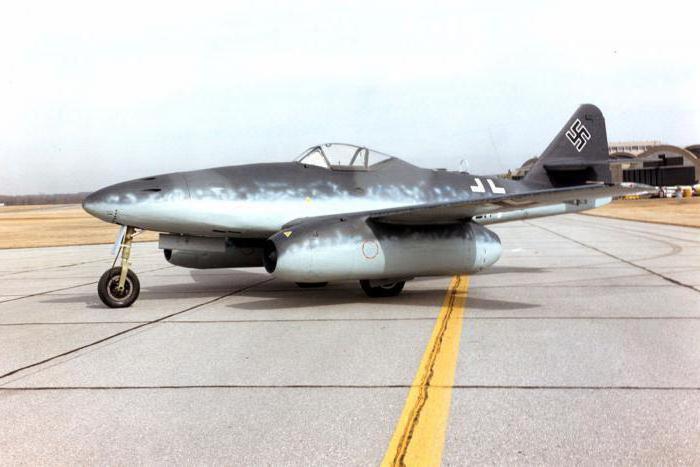
Чтобы доказать свою правоту, Галланд предложил сформировать специальное соединение под его командованием, оснастив его самолетами «Мессершмитт ME-262». В личный состав формирования, среди прочих, зачислили Герхарда Бархорна (на тот момент он имел 301 воздушную победу), Гейнца Бэра (220 побед), Вальтера Крупински (197 побед), Йоханесса Штейнхоффа (176 побед), Гюнтера Лютцова (108 побед) и др. Соединение получило название «Истребительная часть «Ягдфербанд 744 (J744)».
General info
Flight Performance
Describe how the aircraft behaves in the air. Speed, manoeuvrability, acceleration and allowable loads — these are the most important characteristics of the vehicle.
| Characteristics | Max Speed(km/h at 6,000 m) | Max altitude(metres) | Turn time(seconds) | Rate of climb(metres/second) | Take-off run(metres) | |||
|---|---|---|---|---|---|---|---|---|
| AB | RB | AB | RB | AB | RB | |||
| Stock | 824 | 798 | 12 500 | 29.0 | 30.0 | 16.0 | 15.0 | 750 |
| Upgraded | 909 | 865 | 27.7 | 28.0 | 24.5 | 20.0 |
Details
| Features | |||||
|---|---|---|---|---|---|
| Combat flaps | Take-off flaps | Landing flaps | Air brakes | Arrestor gear | Drogue chute |
| ✓ | ✓ | ✓ | X | X | X |
| Limits | ||||||
|---|---|---|---|---|---|---|
| Wings (km/h) | Gear (km/h) | Flaps (km/h) | Max Static G | |||
| Combat | Take-off | Landing | + | — | ||
| 1050 | 450 | 580 | 580 | 380 | ~11 | ~5 |
| Optimal velocities (km/h) | |||
|---|---|---|---|
| Ailerons | Rudder | Elevators | Radiator |
| < 500 | < 600 | < 680 | N/A |
Engine performance
| Engine | Aircraft mass | |||||||
|---|---|---|---|---|---|---|---|---|
| Engine name | Number | Empty mass | Wing loading (full fuel) | |||||
| Junkers Jumo 004B-1 | 2 | 4,280 kg | 287 kg/m2 | |||||
| Engine characteristics | Mass with fuel (no weapons load) | Max TakeoffWeight | ||||||
| Weight (each) | Type | 16m fuel | 20m fuel | 30m fuel | 45m fuel | 53m fuel | ||
| 720 kg | Axial-flow turbojet | 4,894 kg | 5,041 kg | 5,409 kg | 5,961 kg | 6,255 kg | 6,520 kg | |
| Maximum engine thrust @ 0 m (RB / SB) | Thrust to weight ratio @ 0 m (100%) | |||||||
| Condition | 100% | WEP | 16m fuel | 20m fuel | 30m fuel | 45m fuel | 53m fuel | MTOW |
| Stationary | 910 kgf | N/A | 0.37 | 0.36 | 0.34 | 0.30 | 0.29 | 0.28 |
| Optimal | 910 kgf(0 km/h) | N/A | 0.37 | 0.36 | 0.34 | 0.30 | 0.29 | 0.28 |
- 15 mm Steel — Behind the pilot
- 15 mm Steel — Pilot’s headrest
- 15 mm Steel — Between cockpit and fore fuel tank
- 15 mm Steel — Instrument panel plate
- 90 mm Bulletproof glass
Media
- SKins
Skins and camouflages for the Me 262 series from live.warthunder.com.
- Images
-
First prototype was fitted with a Jumo 210 600 hp and a wooden propeller. This saved the test pilot on at least one occasion.
-
Asymmetrical jet engine test prototype
-
Me 262A «White 3» at the Dübendorf airfield in Switzerland
- Videos
https://youtube.com/watch?v=vLjomUR1uvY%3F
BaronVonGamez Review
https://youtube.com/watch?v=hgi1k_ljFYw%3F
The Shooting Range #14 — Pages of History section at 06:16 discusses the Me 262 and the Kikka.
https://youtube.com/watch?v=0h_MPhebE_o%3F
JonManProductions Guide
https://youtube.com/watch?v=bxalaBFUfb8%3F
The Shooting Range #174 — Pages of History section at 04:45 discusses the Me 262 «Schwalbe».
Sources
Paste links to sources and external resources, such as:
- topic on the official game forum;
- page on aircraft encyclopedia;
- other literature.
| Bavarian Aircraft Corporation (Bayerische Flugzeugwerke Aktiengesellschaft (BFW)*) | |
|---|---|
| Bf 109 | Flegel’s Bf 109 A · Bf 109 B-1 · Bf 109 E-1 · Bf 109 E-3 · Bf 109 E-4 · Bf 109 E-7/U2 · Bf 109 F-1 · Bf 109 F-2 · Bf 109 F-4 · Bf 109 F-4/trop · Bf 109 G-2/trop · Bf 109 G-6 · Bf 109 K-4 · Bf 109 G-10 · Bf 109 G-14 · Bf 109 Z |
| Bf 110 | Bf 110 C-6 · Bf 110 C-7 · Bf 110 F-2 · Bf 110 G-2 |
| Me 410 | Me 410 A-1 · Me 410 A-1/U2 · Me 410 A-1/U4 · Me 410 B-1 · Me 410 B-1/U2 · Me 410 B-2/U4 · Me 410 B-6/R3 |
| Bombers | Me 264 |
| Jet Fighters | Me 163 B · Me 163 B-0 · Me 262 A-1a · Me 262 A-1/U4 · Me 262 A-2a · Me 262 A-1a/U1 · Me 262 C-1a · Me 262 C-2b |
| Export | ▅Bf 109 E-7 · ▄Bf 109 G-14/AS · ▄Bf 109 G-2 · Bf 109 G-2 |
| Captured | ▃Bf 109 F-4 |
| * BFW was later renamed Messerschmitt Aktiengesellschaft (AG) on 11 July 1938. All aircraft currently in production at this time retained the designation Bf while those developed after this date had the designation Me. |
| Germany jet aircraft | |
|---|---|
| Ar 234 | Ar 234 B-2 · Ar 234 C-3 |
| He 162 | He 162 A-1 · He 162 A-2 |
| Ho 229 | Ho 229 V3 |
| Me 163 | Me 163 B · Me 163 B-0 |
| Me 262 | Me 262 A-1a · Me 262 A-1a/U1 · Me 262 A-1/U4 · Me 262 A-2a · Me 262 C-1a · Me 262 C-2b |
| USA | CL-13A Mk 5 · CL-13B Mk.6 · ▀F-86K · F-104G |
| USSR | ▀MiG-15bis · ▀MiG-19S · ▀MiG-21MF |
| Britain | Sea Hawk Mk.100 |
| Italy | ▀G.91 R/3 · ▀G.91 R/4 |
Короткая биография «Ягдфербанд 744 (J744)»
В марте 1945 года штаб нового соединения разместился на аэродроме Мюнхен-Рием, откуда и приступил к перехватам армад бомбардировщиков союзников, которые совершали дневные налеты на Германию. За месяц с небольшим за этой новоявленной элитной авиачастью числилось уже 45 сбитых самолетов союзнической авиации. Однако продолжалось это недолго. 3 мая 1945 года она была разгромлена союзниками в Зальцбурге.

Сам Адольф Галлан также не отказывался от штурвала самолета. Он принимал участие во многих операциях по перехвату налетов бомбардировщиков союзников. 25 апреля во время одной из них он был сбит американским истребителем прикрытия «Рипаблик Р-47». Летчик получил ранения в оба колена и не смог нормально посадить свой истребитель на изрытое воронками поле.
